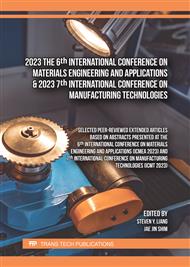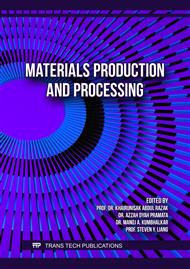p.51
p.59
p.69
p.77
p.85
p.91
p.99
p.107
p.113
HF Compatibility Study on KrF and I-Line System Resist
Abstract:
Advance nanoscale patterning technology requires high resolution lithography, from ultraviolet (UV, i-line system) to deep ultraviolet (DUV, KrF system) until extreme ultraviolet (EUV), but the compatibility study of new resist types and wet etchant is lacking. The compatibility is defined as the duration of a photoresist being able to withstand in wet oxide etchant. Poor compatibility has potential resist lifting and/or penetration during wet etch process, which causes electronic device performance drifting. Currently, wet oxide etching is widely used in the gate oxide wet etch using patterned resist, as well as in the backside oxide removal with blanket resist front-side coverage. In this paper, we explore the compatibility and understand the impact factors, based on commonly used resist (i.e., KrF and i-line system resist) and wet etch chemicals (i.e. HF based etchant) in industry. It is important to do a quick and straightforward compatibility check before we implement new resists on actual product wafers, to prevent poor compatibility caused resist lifting and/or penetration during wet etch process. Based on oxide thickness check and resist lifting phenomena, it is found that resist baking condition, resist polymer type, resist composition, and lag time from resist coating to wet oxide etching all will affect the compatibility between HF based etchant and resist.
Info:
Periodical:
Pages:
99-104
Citation:
Online since:
November 2023
Authors:
Keywords:
Price:
Сopyright:
© 2023 Trans Tech Publications Ltd. All Rights Reserved
Share:
Citation:



